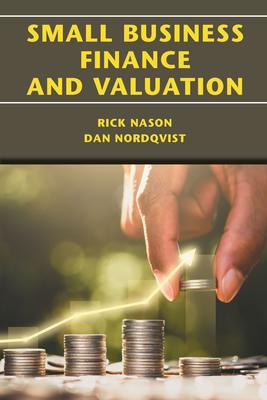
We examine the effects of access to credits on firm growth. We use OLS estimators to estimate regressions of a dummy variable for whether a firm has been growing (growing) on a dummy variable for whether the firm has access to credits (access) and a set of other variables, which may include a dummy variable for whether the firm is small (small), an interaction term between access and small, years of schooling of the manager, age of the manager, and age of the firm. The table below shows the results (heteroskedasticity-robust standard errors are in parentheses). Dependent variable: The firm has been growing (1) (2) (3) (4) (5) Access to credits 0.10 0.09 0.07 0.10 0.08 (0.02) (0.02) (0.02) (0.03) (0.03) Small firm -0.17 -0.14 -0.17 -0.13 (0.02) (0.02) (0.02) (0.02) Access to credits * Small firms 0.02 0.02 (0.04) (0.04) Years of schooling of the manager 0.03 0.03 (0.01) (0.01) Age of the manager 0.01 0.01 (0.02) (0.03) Age of the firm 0.01 0.01 (0.01) (0.02) Constant 0.66 0.79 5.76 0.79 5.76 (0.01) (0.01) (1.63) (0.02) (1.63) Observations 3,432 3,424 3,364 3,424 3,364 Adjusted R-squared 0.01 0.03 0.09 0.03 0.09 (a) Consider the following key assumptions of the OLS estimators: (1) linear in parameters, (2) no perfect collinearity, (3) zero conditional mean, (4) homoskedasticity, and (5) normality. Assess whether each of the assumptions is likely to hold in the estimation of the most complete model above (i.e., column 5), and suggest quick fixes to address the problems if there are any. We examine the effects of access to credits on firm growth. We use OLS estimators to estimate regressions of a dummy variable for whether a firm has been growing (growing) on a dummy variable for whether the firm has access to credits (access) and a set of other variables, which may include a dummy variable for whether the firm is small (small), an interaction term between access and small, years of schooling of the manager, age of the manager, and age of the firm. The table below shows the results (heteroskedasticity-robust standard errors are in parentheses). Dependent variable: The firm has been growing (1) (2) (3) (4) (5) Access to credits 0.10 0.09 0.07 0.10 0.08 (0.02) (0.02) (0.02) (0.03) (0.03) Small firm -0.17 -0.14 -0.17 -0.13 (0.02) (0.02) (0.02) (0.02) Access to credits * Small firms 0.02 0.02 (0.04) (0.04) Years of schooling of the manager 0.03 0.03 (0.01) (0.01) Age of the manager 0.01 0.01 (0.02) (0.03) Age of the firm 0.01 0.01 (0.01) (0.02) Constant 0.66 0.79 5.76 0.79 5.76 (0.01) (0.01) (1.63) (0.02) (1.63) Observations 3,432 3,424 3,364 3,424 3,364 Adjusted R-squared 0.01 0.03 0.09 0.03 0.09 (a) Consider the following key assumptions of the OLS estimators: (1) linear in parameters, (2) no perfect collinearity, (3) zero conditional mean, (4) homoskedasticity, and (5) normality. Assess whether each of the assumptions is likely to hold in the estimation of the most complete model above (i.e., column 5), and suggest quick fixes to address the problems if there are any







